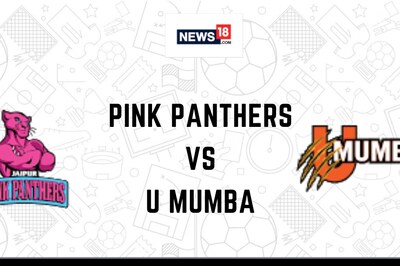
views
New Delhi: Indian Space Research Organisation (ISRO) chairman K Sivan said that the agency over the next two weeks would continue to make efforts to re-establish communication with the Chandrayaan-2 Lander, which failed to touch down on the moon in the early hours of Saturday.
“Right now the communication is lost, but we are trying to re-establish communication with the lander over the next 14 days,” said Sivan. “The first phases of the power descent were executed properly... it was in the last phase that we lost communication with the lander.”
Scientists lost contact with the Lander Vikram just seconds before it was due to touch down, 2.1 km from the lunar surface towards the South Pole.
“The payload in the orbiter is going to give us a lot of data over the next few years... we were successful with our scientific mission but it is the technology demonstration where we failed,” Sivan said. “The mission was nearly a 100% success.”
“For the first time, we will be getting data from the polar region of the moon...the world will be accessing this information for the first time ever,” he added.
Sivan said the planned life of the Orbiter, placed around the moon, has been enhanced to seven years as compared to a year as estimated earlier. “The Orbiter can function for 7.5 years and not a year as said before because of the fuel that is available,” he said. “This will enable us to cover the entire globe of the moon.”
Sivan said that the Chandrayaan-2's failed attempt at landing would not have a cascading effect on other projects of the space agency.
"No other project will be delayed. We will be going ahead with the Carto Sat project by the end of October, we are on course for completion of all our other projects, including Gaganyaan," he said. "The Gaganyaan mission will commence by the end of 2020."
Under the Gaganyaan mission, India hopes to send humans to space and bring them back in 2022. It will be India’s first manned space mission and a number of selection processes will be done to choose astronauts. The mission was initially announced by Prime Minister Narendra Modi during his Independence Day speech in 2018.
A stoic Sivan reiterated that the mission has not been a failure, as several students who watched the mission with PM Modi at ISRO, as well as social media users, have maintained. "They (children) have a clear mind and their observation was very inspirational for us," he said. "We have shown them what can be possible."
A disheartened Sivan, who broke down and could be seen visibly upset after the Lander lost touch with ISRO, was consoled by Modi. He was comforted by the PM, who gave Sivan a pat on his back and lauded the efforts of the experts.
"The Prime Minister has been a source of inspiration and support... his speech gave us a lot of support and motivation," said Sivan. "His word were very motivating, our team was very happy with what the PM had to say."
"People were down with what happened towards the end yesterday but the PM's words brought us back on track, his speech has motivated us to continue with our mission," said Sivan.
"The best is yet to come in our space programme. India is with you," Modi had said in an early-morning address on Saturday after watching the proceedings at the ISRO command centre in Bengaluru.




















Comments
0 comment